
Links to additional resources on the Armenian Genocide
- Subject:
- History
- World History
- Material Type:
- Case Study
- Homework/Assignment
- Author:
- Amit
- Date Added:
- 06/12/2021

Links to additional resources on the Armenian Genocide
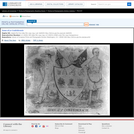
A small card bearing a vitriolic indictment of the Confederacy. The artist particularly attacks the the institution of slavery, the foundation of Southern economy. A large shield is flanked by two figures: a planter (left) and a slave. The planter wears spurs and a broad-brimmed hat and smokes a cigar. The slave is clad only in breeches, and his hands are manacled. Above the shield are two crossed flags, the Confederate flag and one bearing a skull and crossbones and the number 290. Between the flags are a rooster and a streamer with the motto "servitudo esto perpetua." On the shield are images associated with the South: a mint julep, a bottle of "Old Rye," a pistol and dagger, a whip and manacles, cotton, tobacco, and sugar plants, and slaves hoeing. In the background left, dominated by the palmetto tree of South Carolina, three planters, one holding a whip, play cards at a table. Beyond, two men duel with pistols. On the right, a female slave is auctioned as two slave children stand by and a black woman watches from a cabin doorway.|G.H. Heap Inv. [i.e., published].|H.H. Tilley Del. et Sc.|Title appears as it is written on the item.|Forms part of: American cartoon print filing series (Library of Congress)|Published in: American political prints, 1766-1876 / Bernard F. Reilly. Boston : G.K. Hall, 1991, entry 1862-13.

This resource is a video abstract of a research paper created by Research Square on behalf of its authors. It provides a synopsis that's easy to understand, and can be used to introduce the topics it covers to students, researchers, and the general public. The video's transcript is also provided in full, with a portion provided below for preview:
"Deep-sea hydrothermal vent ecosystems host an array of macrofauna, including many invertebrates. These animals adapt to the extreme conditions by forging endosymbiotic relationships with chemoautotrophic bacteria. Phages, viruses that infect prokaryotes, can fundamentally affect endosymbiotic bacteria, but their specific roles in deep-sea vent endosymbionts are not yet known. A recent study utilized metagenomics, transcriptomics, and proteomics to examine the endosymbiotic phages associated with the deep-sea vent snail Gigantopelta aegis. These phages infected methane- and sulfur-oxidizing bacteria, and there was evidence of both lysogenic and lytic lifecycles. The genomes also showed evidence of an arms race between bacteria and phages, with the bacteria encoding defense systems like CRISPR–Cas to break down phage DNA and the phages encoding their own anti-defense mechanisms. The phages also had horizontally acquired auxiliary metabolic genes, which could benefit replication..."
The rest of the transcript, along with a link to the research itself, is available on the resource itself.

The text is mostly an adaptation of two other excellent open- source calculus textbooks: Active Calculus by Dr. Matt Boelkins of Grand Valley State University and Drs. Gregory Hartman, Brian Heinold, Troy Siemers, Dimplekumar Chalishajar, and Jennifer Bowen of the Virginia Military Institute and Mount Saint Mary's University. Both of these texts can be found at http://aimath.org/textbooks/approved-textbooks/.
The authors of this text have combined sections, examples, and exercises from the above two texts along with some of their own content to generate this text. The impetus for the creation of this text was to adopt an open-source textbook for Calculus while maintaining the typical schedule and content of the calculus sequence at our home institution.
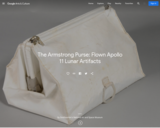
The bag itself was immediately recognizable in that the ALSJ long has had a page devoted to what the astronauts referred to as a McDivitt Purse.

Can your students identify food aromas? In this lesson, students will have an opportunity to sniff and identify up to 32 aromas. This is part of the Food Science CDE in FFA as well!

Preparations & Properties of Aromatic Acids

Preparation and Properties of Aromatic Amines

Students use Library of Congress primary sources to plan, take, and document a trip around the world in 1896.

Use Google Expedition Kits to explore various places around the world!

This site makes available for viewing the nearly nine hundred images of modes of transportation taken by American photographer William Henry Jackson in North Africa, Asia, Australia, and Oceania. The site allows searches by subject and Keyword, and gives archival information about it.
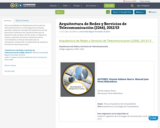
Una vez estudiados los fundamentos de las redes de telecomunicaciones, en esta asignatura el alumno aprende y enlaza los conceptos de arquitectura de red, protocolos e interfaces de comunicaciones para el diseño de redes de datos. De este modo, se capacita al alumno a aprender de manera autónoma nuevos conocimientos y técnicas adecuados para la concepción, el desarrollo o la explotación de sistemas y servicios de telecomunicación.
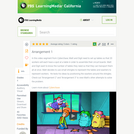
The CyberSquad tries to figure out a table arrangement for 20 workers in this video from Cyberchase.
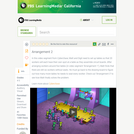
In this video segment from Cyberchase, Matt tries for a second time to arrange tables and chairs to accommodate 20 workers.
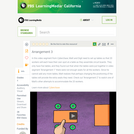
Matt's third table arrangement helps fit all 20 workers at five tables in this video segment from Cyberchase.

This short video and interactive assessment activity is designed to teach fourth graders about arranging numbers in specific order (numbers to 1,000).

This short video and interactive assessment activity is designed to teach third graders about arranging numbers in specific orders.

This short video and interactive assessment activity is designed to teach fourth graders about arranging and ordering capacities (english units).

This activity will help students apply their knowledge about arrays to a real-world situation. Students will design buildings and create an array of windows for eah building. Students will use the array to write an addition sentence and a multiplication equation to determine how many windows each building consist of.